Kikuboshi 145 i KRG Saito SK3
Niby wszystkie wersje zaprojektował ten sam Ryuichi Saito 斎藤隆. Nie mniej każda, choć brandowane pod różnymi markami Ribbon Co, była wykonana w odmiennej formie. Zmiany uwidaczniają się nie tyle w samej puncy, co w zastosowanych materiałach, profilu i szlifie. W związku z tym, są to inne brzytwy. Szny ten sam, rozpoznawalny z daleka. Ale inne golenie. W tym wpisie pokazuje dwie cenione sztuki z rodziny SK. Z ich trzech wersji, to SK2 osobiście najbardziej mi pasuje, a ze wszystkich wersji SK2 to właśnie realizacje Kikuboshi wydają mi się najlepsze w użyciu. Stąd jedną z brzytew dziś jest właśnie Kikuboshi 145 (aka SK2). Druga to najczęściej spotykana wersja, czyli SK3 w typowym oznaczeniu w postaci puncy z inicjałami projektanta RS i tajemniczym oznaczeniem KRG (chyba nikt nie doszedł co ona oznacza). Wyjątkową czyni ją okładka z oryginalnym metalowym logo RS wtopionym w okładki. Jest to wersja rzadko spotykana na rynku.
Tyle o samych brzytwach. Dołączają do kolekcji. W tym wpisie chciałem przedstawić kilka trików stosowanych w czasie renowacji. Każdy znajduje swoje sposoby na trudności, które napotyka przy renowacji. Warto się podzielić na konkretnym przykładzie.
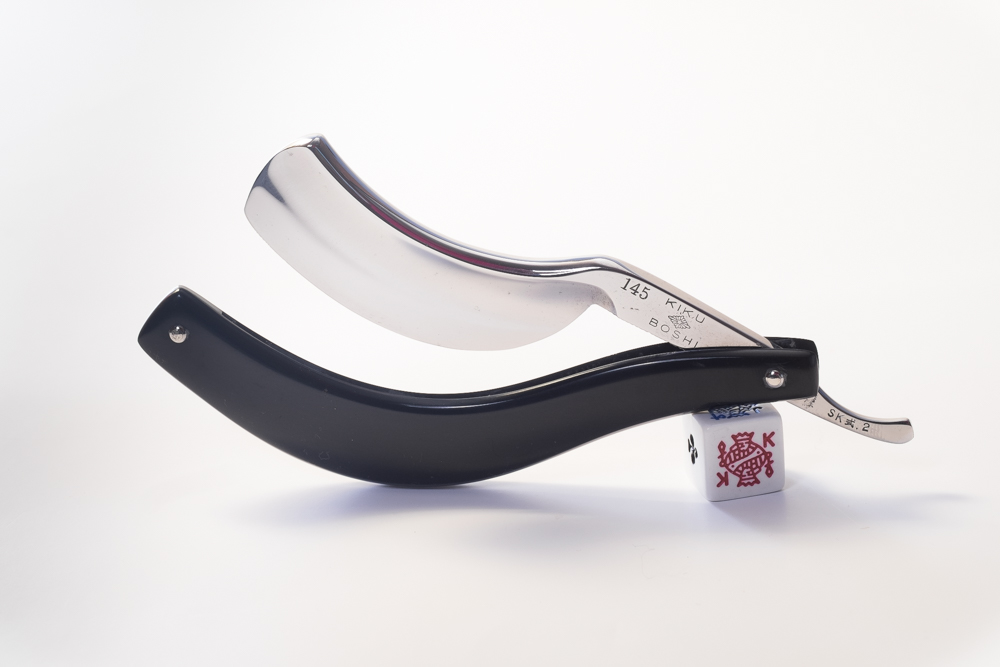
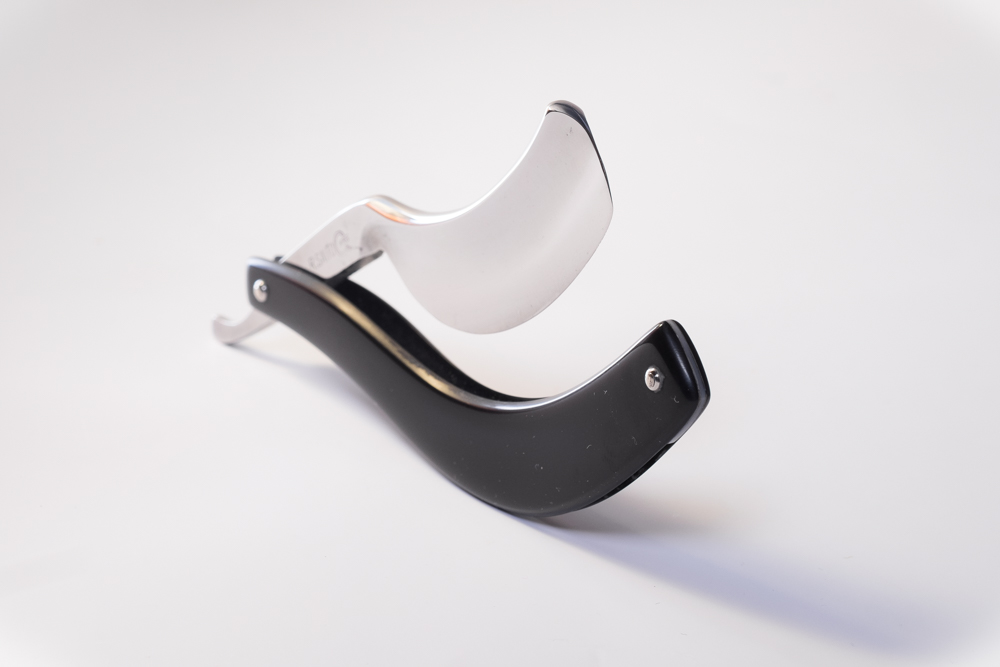
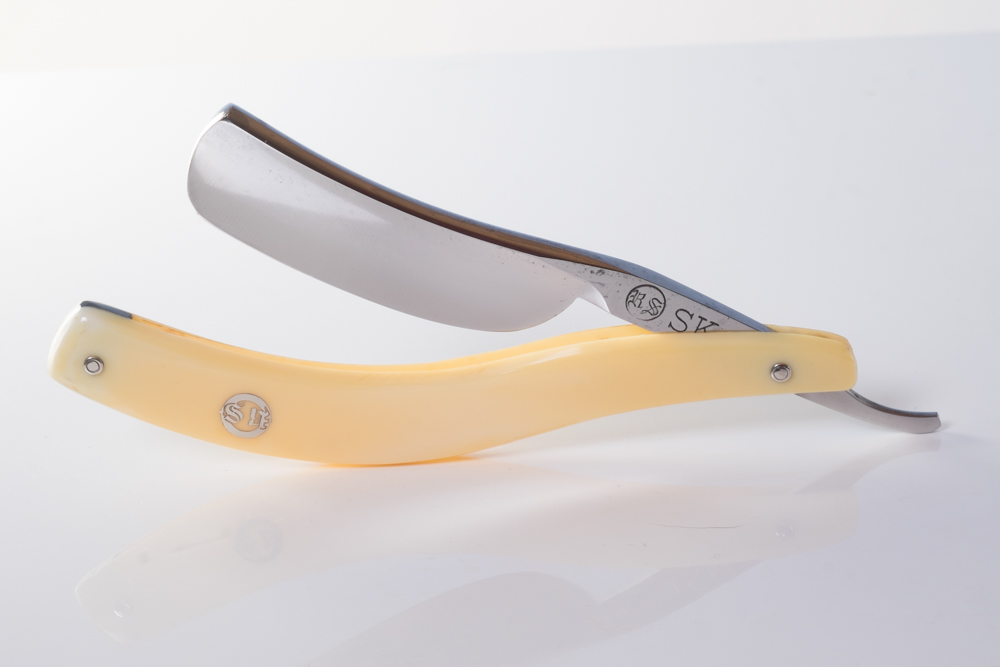
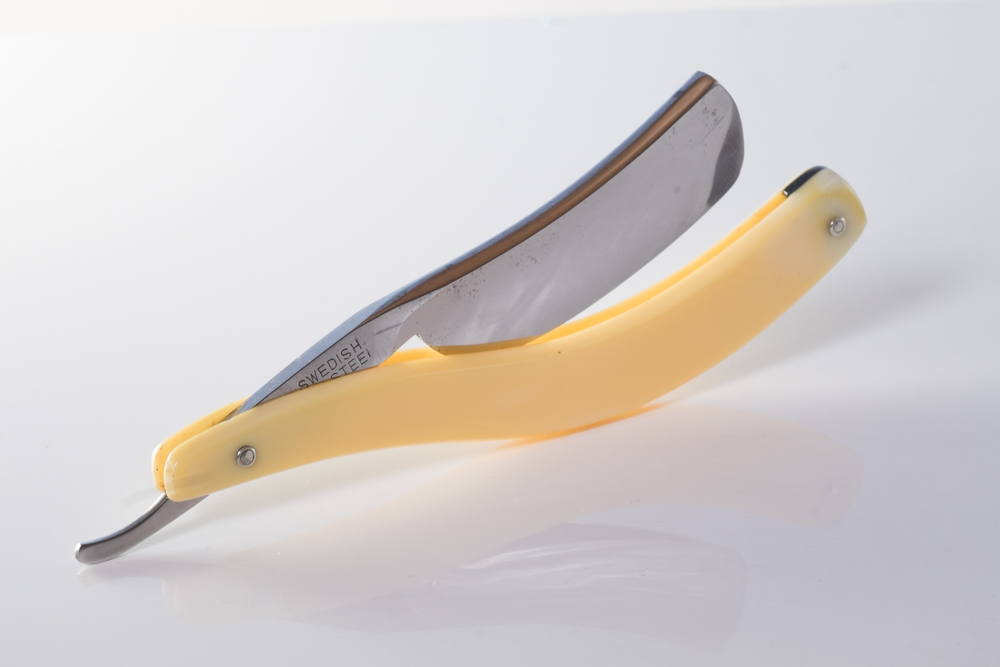
(nie)Trick nr 1
Renowacja jest przede wszystkim próbą cierpliwości. Podziwiam niektórych mistrzów renowacji, bo ich kunszt, oprócz wiedzy, świadczy o anielskiej cierpliwości. Mnie często jej brakuje. Normalnym jest pokusa pójścia na skróty. Sam niejednokrotnie dostawałem dobre rady wskazujące elektronarzędzia, głównie typu końcówek do Dremela. Niestety, uważam że nie ma drogi na skróty. Żadne roztwory, ani dyski szlifierskie nie nadają się do tak delikatnej pracy. Zrobią więcej szkody niż pożytku. Użycie tych narzędzi to nie trick, tylko kosztowna droga na skróty.
Trick nr 1
W związku z powyższym konieczne jest zbieranie wklęsłości szlifu kolejnymi gradacjami papieru (500, 600, 800, 1000, 1200, 1500, 2000 w moim przypadku). Materiały miękkie (typu tkaniny ścierne) nie nadają się, bo w gruncie rzeczy chodzi o zrównanie “dołków” i “górek” na remontowanej powierzchni. Najlepiej by materiał ścierny pracował na jak najszerszej powierzchni. Miejscowe wybieranie materiału może wręcz zmienić geometrię ostrza. Dość popularnym jest użycie korka ze względu na równowagę sztywności i elastyczności, oraz profil. Mój osobisty trick polega na …. użyciu widelca. Tak właśnie. Kto próbował pracować korkiem od razu wie ja niefajnie ściska się taki mały przedmiot kilka godzin. Widelec wyśmienicie poprawia uchwyt, manewrowość i nie męczy ręki.
Trick nr 2
Starowinki mają to do siebie, że najczęściej wżery pojawiają się w najgłębszym miejscu szlifu przy czubku ostrza. Bywa, że brzytwa wygląda na NOS, a na nosie ma tak głęboki wżer, że i tak trzeba całą szlifować dogłębnie. Jak wspomniane wyżej, miękkie i wąskie tarcze się nie sprawdzają. Ale sprawdzają się twarde kamienie. Pokazane na zdjęciu paluszki, podpatrzone u jednego z naszych producentów, ścierne są bardzo pomocne. Można dobrać potrzebne gradacje. Przed wszystkim trzymanie takiego paluszka jest wygodne i bezpieczne. Wystarczy odpowiednio zaokrąglić jego końcówkę. Niektórzy stosuje zestaw kamieni naturalnych tzw. paluszków jnat, dokładnie w tym samym celu. Wybranie uszczerbków w ten sposób przyspiesza pracę z papierem ściernym. Ten etap zawsze jest niezbędny.
Trick nr 3
To nie trick, ale też chyba nie lenistwo. Wygląda na to, że w polerowaniu także trzeba robić progresję. Po papierze 2000 wciąż zostają wyraźne ślady. Nawet jeśli celuje się w wykończenie satynowe, a nie lustro, wyraźne rysy są jakby zgrzytem. Dlatego najpierw stosuje pasty diamentowe o różnej gradacji, sukcesywnie przechodząc na pasty polerskie i nabłyszczające. Przy takiej ilości przejść wydaje mi się wskazane użycie elektrycznej polerki i różnych tarcz filcowych i materiałowych. Na końcu nie objedzie się bez polerowania ręcznego.
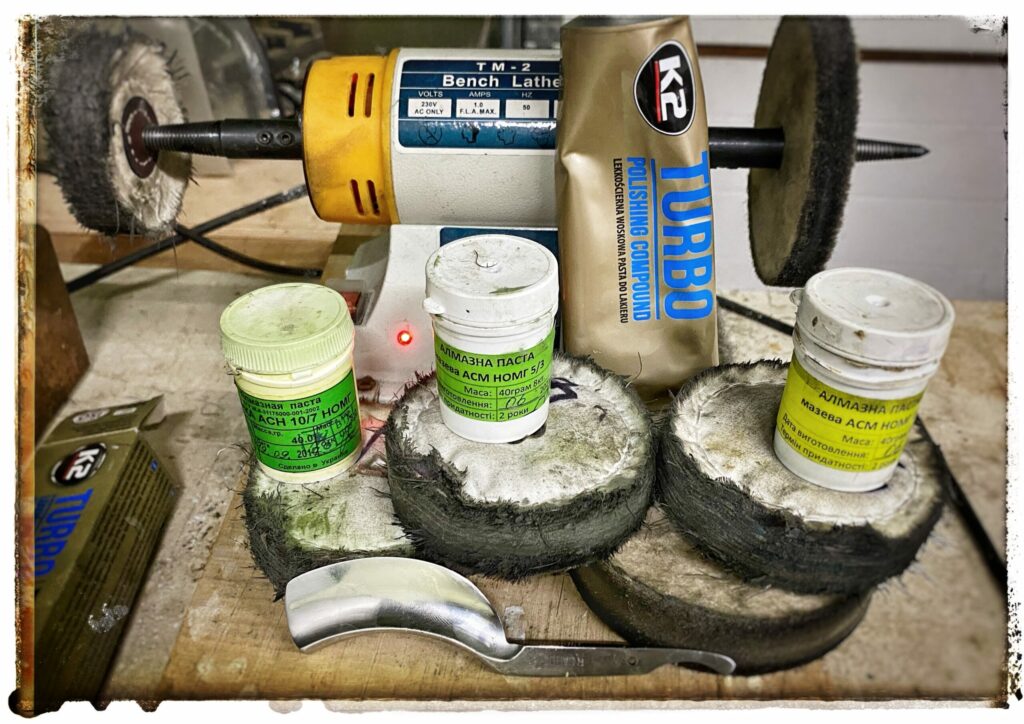
Trick nr 4
Co jest najtrudniejsze i irytujące w renowacji. Dla mnie, są te małe wkurzające podkładki, które nie chcą w dodatku przechodzić przez mocno spasowane pręty do nitowania. To wszystko w układzie 3D, z tendencją to spadania. Dlatego zaklepuję jedną stronę przed osadzeniem w okładkach. Następnie mocuje nit w szczelinie samozaciskowej płyty roboczej (zwykłej, ale super twardej deski). Sprawdzi mi się to podejście wyśmienicie. Ten sam samozaciskający otwór sprawdza się przy wyrabianiu klina.
Inna bardzo częsta wada brzytew to brak centryczności. Wtedy brzytwa zahacza za okładki. Pomijam niezrozumienie jak działa klin i błędy z tym związane oraz problem “żyjących” okładek rogowych. Chodzi mi raczej o typowy brak centryczności otworów na nity, który kończy się skrzywieniem nita. Efekt użytkowy jest taki sam – ostrze haczy o okładki. Wywiercenie centrycznego otworu prostopadle do okładek jest sprawą jasną. Trick (nie trick) polega na próbnym skręcaniu brzytwy śrubkami o identycznej średnicy co nit. Pomijanie tego etapu kosztuje.
Trick nr 5
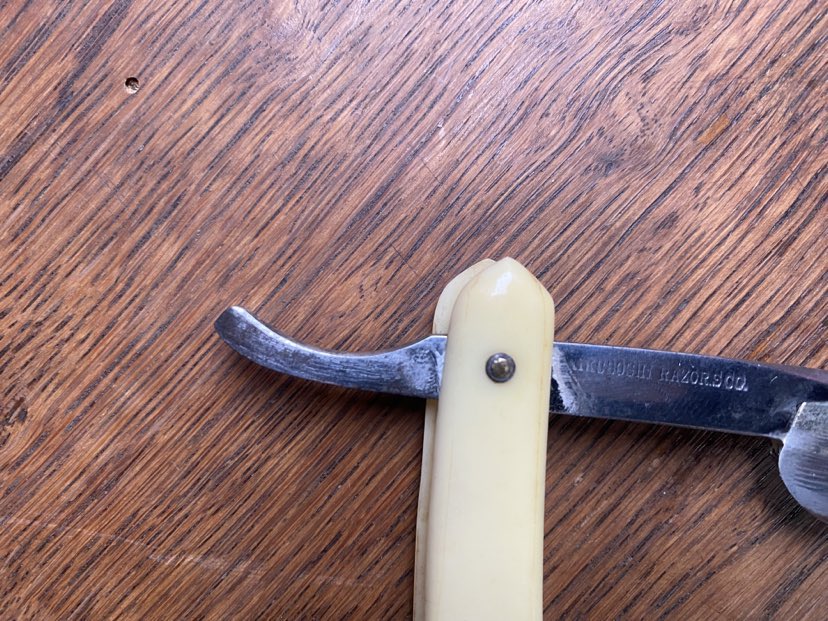
Myślę, że panowie, którzy mają nieporównywalnie więcej doświadczenia ode mnie mogliby tu wiele dodać. Wszystkie prace związane z renowacją wspomnianych na początku SK2 i SK3 są dostępne na playliście YT
Na koniec przedstawiam ostrzenie SK3. Bardziej spektakularnie byłoby pokazać SK2. Nie mniej nawet na tym przykładzie widać mniej więcej o co chodzi w ostrzeniu brzytwy z uśmiechem. Nie ma na wideo jakiegoś własnego tricku. Choć muszę przyznać, że podobnie jak w garncarstwie, najlepiej pracuje się na stojąco, blisko wody.